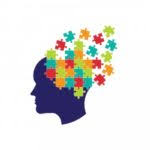Journal of Communication Disorders and Assistive Technology
ISSN: 2576-3997

Communication entails receiving, understanding, and expressing information, feelings, and ideas. Communication disorders range from hearing impairments to speech disorders, to language disorders and affect all ages, geographical areas, social classes, and ethnic origins. The ability to communicate effectively is an essential skill in modern society. People with communication disorders can have negative social effects as they cannot effectively communicate their ideas and personalities to others.
Assistive technology, also known as AT, is any tool, whether high tech or low tech, that supplements a person’s inability to perform tasks (such as communicate) through the application of technology. Recent advances in communication disorders and assistive technology have transformed the landscape of speech and hearing rehabilitation. These technological innovations have enabled individuals with speech and hearing impairments to communicate more effectively and independently, improving their quality of life and social interactions. Some examples of assistive technologies used in communication disorders include hearing aids, cochlear implants, speech-generating devices, and augmentative and alternative communication (AAC) devices. These tools, coupled with advancements in teletherapy and tele-audiology, have expanded access to speech and hearing services to underserved communities and remote areas. As research in this field continues to evolve, we can expect to see further advancements that will enhance the lives of individuals with communication disorders.
Journal Information
Title: Journal of Communication Disorders and Assistive Technology
ISSN: 2576-3997
Publication format (s): Electronic
Publication Frequency: Bimonthly
NLM title abbreviation: J Commun Disorder Assist Technol
Other titles: JCDAT
Article Type: Original Research, Review Articles, Short reports or Letters, Case Studies, Methodologies.
Peer review: Double-blind
Review speed: 2 weeks
Fast-track review: 10 days
Publication policy: Open Access; COPE guide
Language: English
Contact email: editor@asterpublications.com
QUICK LINKS: Editorial Team Current Issue
Recently Published Article(s)
Evaluation of a Prototype Application for Supporting Visual-Graphic Symbol Acquisition in Preschool Aged Children with Complex Communication Needs View Article
Susan S. Johnston, John M. Jameson, Benjamin A. Coletta, Gregory Bayles, Leddy Burdiss
Eye-gaze Profiles of Children with Autism Spectrum Disorder in Relation to Visual Search Skills
Daiquirie L. Crumrine and Trisha L. Self View Article
Early Intervention Case Study: Bone-Anchored Hearing Aid (BAHA) Softband Fitting in Treacher Collins Syndrome
Diane Davis and Yula C. Serpanos View Article
Eye-gaze Profiles of Children with Autism Spectrum Disorder in Relation to Fast-mapping Abilities
Daiquirie L. Crumrine and Trisha L. Self View Article
‘ Journal of Communication Disorders and Assistive Technology’ primarily focuses on publishing topics on communication disorders, prevention, early intervention, and the role of assistive technology in supporting people with communication disabilities. ‘Journal of Communication Disorders and Assistive Technology’ welcomes scholars across the globe to submit their original research papers fulfilling the requisite criterion. The journal also accepts reviews, short communication, editorial, expert review, and letter to the editor.
All the manuscripts published by ‘Journal of Communication Disorders and Assistive Technology’ undergo rapid, quality, and quick review processing by eminent editorial and review teams maintaining high standards and ethics of publishing. The scholarly content published online will be freely available to every reader anywhere in the world to read, download, copy, reuse, and distribute, provided that the original work is properly cited.
Scope of the journal
The field of Communication Disorders encompasses research, assessment, diagnosis, and treatment of individuals with speech, language, and hearing impairments. This includes research on the underlying causes of communication disorders, the development of new treatments and interventions, and the evaluation of existing treatments and interventions.
Some areas of focus within the scope of Communication Disorders include:
- Speech sound disorders
- Language disorders
- Hearing impairments
- Fluency disorders
- Voice disorders
- Augmentative and alternative communication
The scope of assistive technology in Communication Disorders encompasses a wide range of devices and technologies that are used to support individuals with speech, language, and hearing impairments. Assistive technology can be used for both diagnosis and treatment, as well as for enhancing communication in everyday life.
Some areas of focus within the scope of assistive technology in Communication Disorders include:
- Augmentative and alternative communication (AAC) devices
- Hearing aids and cochlear implants
- Speech recognition software
- Text-to-speech software
- Speech therapy software
- Wearable technology ( smartwatches and other wearable devices that can be used to monitor and support communication and hearing).
Authors interested in submitting an article for the journal are required to submit all files at submit manuscript page.
If you encounter any problems during online submission, please email paper to submissions@asterpublications.com.
Indexing and Archiving




Journal of Communication Disorders and Assistive Technology follow the Committee on Publication Ethics (COPE) Guidelines for issues of fraud, image manipulation, and duplicate publication.
Click here for information on Publications Ethics and Guidelines.
Most Viewed Articles (s)
The Effects of the “Speak with Intent” Instruction for Individuals With Parkinson’s Disease - View Article
Use of iPad and Mobile Devices in Children with Autism Spectrum Disorders: A Systematic Review - View Article
Early Intervention Case Study: Bone-Anchored Hearing Aid (BAHA) Softband Fitting in Treacher Collins Syndrome - View Article
The Correlation Between Lifetime Smoking and Ethnicity in People Who Smoke: A Study of Vocal Characteristics - View Article
DAF as Instrumental Treatment for Stuttering in Parkinson’s Disease: A Case Report - View Article
The Effect of Voice Gender and Spoken Messages in Augmented Interactions - View Article



